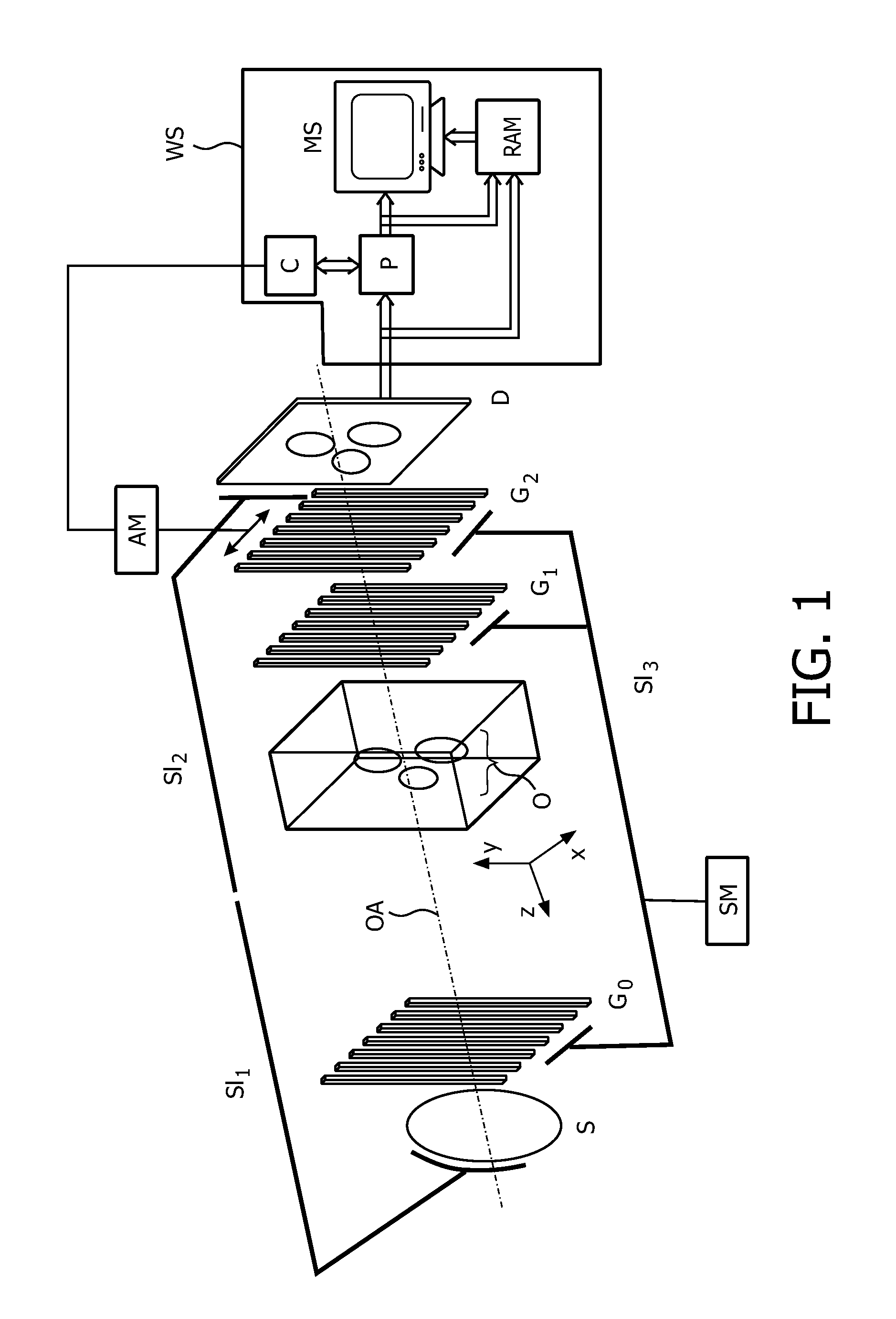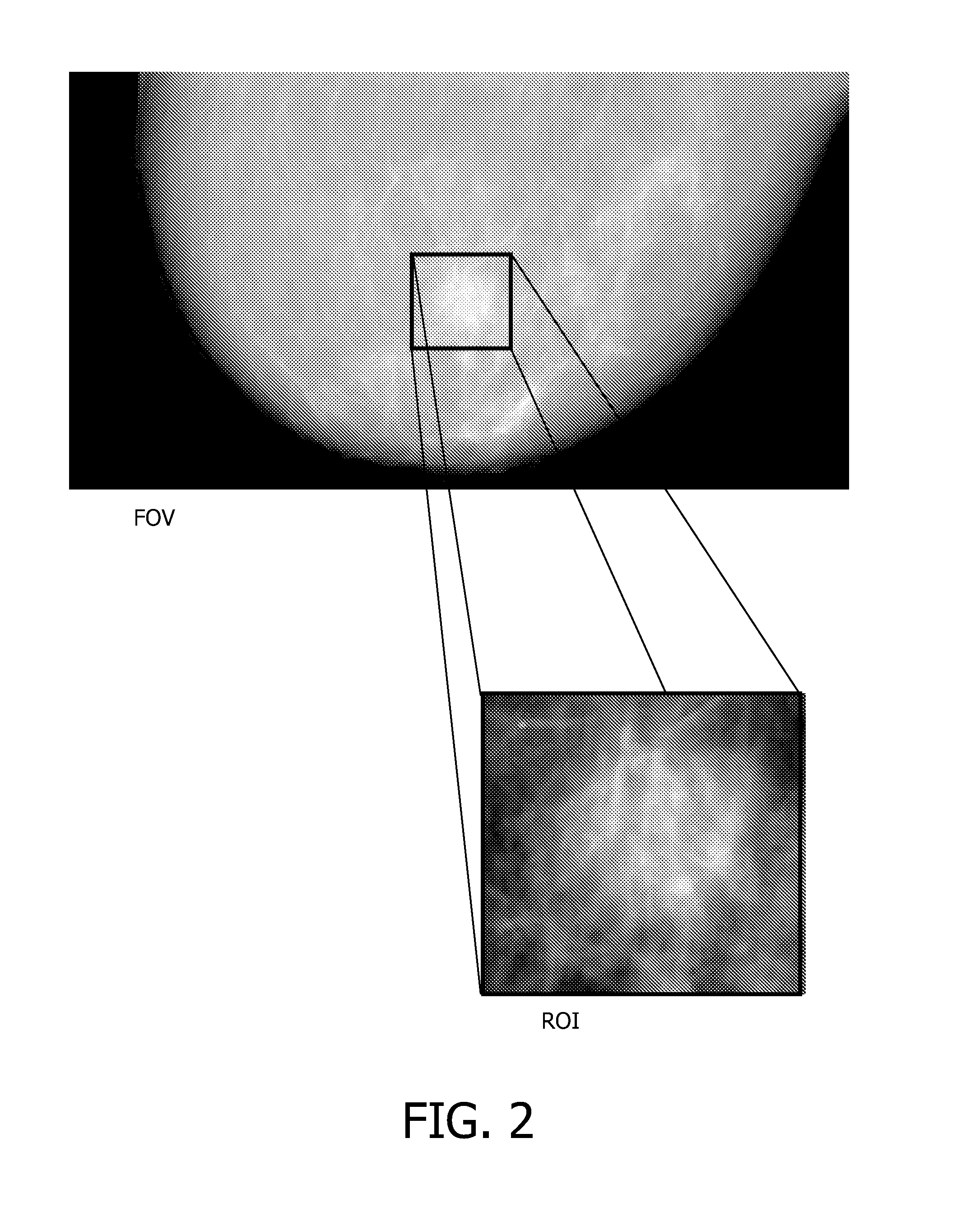Phase contrast imaging
a contrast imaging and phase technology, applied in the field of differential phase contrast imaging, can solve the problems of reducing the signal-to-noise ratio at the detector, reducing the visibility of an interference pattern, and reducing the transmittance mean intensity, so as to increase the exposure, reduce the exposure, and increase the contrast-to-noise ratio
- Summary
- Abstract
- Description
- Claims
- Application Information
AI Technical Summary
Benefits of technology
Problems solved by technology
Method used
Image
Examples
Embodiment Construction
[0044]FIG. 1 is a schematically representation of a grating setup for a Talbot-Lau type hard-X-ray imaging interferometer, which may be used in accordance with the invention. The device will be described in the following in the context of a brief description of the functionality of the different parts of the device.
[0045]Using this kind of interferometer leads to the effect that interfering X-ray beams are not completely separated but merely sheared by a small angle, so that they pass through different, closely spaced parts of the sample. The hard-X-ray imaging interferometer comprises an incoherent X-ray source S, a source grating G0 for achieving spatial beam coherence, a diffractive grating G1 (herein also referred to as phase grating) having a plurality of equidistant X-ray absorbing strips extending in parallel in a direction normal to the interferometer's optical axis, which serves as a phase-shifting beam splitter and is placed in downstream direction behind the object, an ab...
PUM
| Property | Measurement | Unit |
|---|---|---|
| length | aaaaa | aaaaa |
| length | aaaaa | aaaaa |
| height | aaaaa | aaaaa |
Abstract
Description
Claims
Application Information
 Login to View More
Login to View More - R&D
- Intellectual Property
- Life Sciences
- Materials
- Tech Scout
- Unparalleled Data Quality
- Higher Quality Content
- 60% Fewer Hallucinations
Browse by: Latest US Patents, China's latest patents, Technical Efficacy Thesaurus, Application Domain, Technology Topic, Popular Technical Reports.
© 2025 PatSnap. All rights reserved.Legal|Privacy policy|Modern Slavery Act Transparency Statement|Sitemap|About US| Contact US: help@patsnap.com



